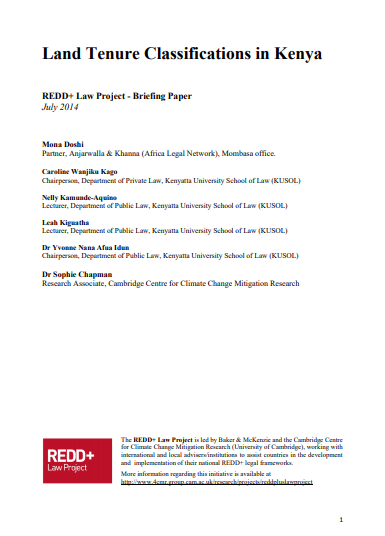Resource information
The UNFCCC framework asks countries to include a national REDD+ institutional framework with certain key elements, many of which will draw on existing legal frameworks. For example, as part of their national strategies and action plans (discussed above), countries are requested to address. land tenure issues:1 The importance of land tenure for regulating land use and assigning benefits from REDD+ has been widely noted. Nonetheless, clarifying and then administering land tenure is a complicated issue that presents a challenge for many countries. Tenure systems can contain many different kinds of rights (for example, rights to ownership, right to use, right to access, right to control and right to transfer),2 and land rights can be a source of conflict and political debate. REDD+ presents a new opportunity to consider this challenge, in addition to creating what could be new resource rights (eg. to carbon). The issue of land rights is highly contested in Kenyan politics.3 Land ownership, use and management was one of the issues addressed by Kenya’s new Constitution. Chapter 5 of the Constitution of 2010 Article 62 states that “all land in Kenya belongs to the people of Kenya collectively as a nation, as communities and as individuals.”4 Thus, land is classified as public land, private land and community land.5 At present, different pieces of legislation (laws) apply to the different categories of land. The purposes of this Brief is to summarise these laws in an accessible format.

